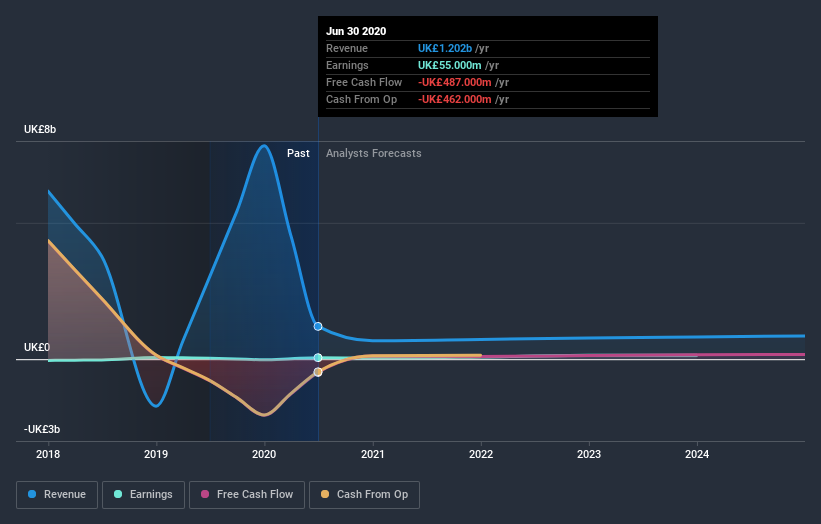How Much Did Quilter's(LON:QLT) Shareholders Earn From Share Price Movements Over The Last Year?

It's easy to feel disappointed if you buy a stock that goes down. But sometimes broader market conditions have more of an impact on prices than the actual business performance. So while the Quilter plc (LON:QLT) share price is down 11% in the last year, the total return to shareholders (which includes dividends) was -7.1%. And that total return actually beats the market decline of 11%. We wouldn't rush to judgement on Quilter because we don't have a long term history to look at. The share price has dropped 12% in three months.
Check out our latest analysis for Quilter
In his essay The Superinvestors of Graham-and-Doddsville Warren Buffett described how share prices do not always rationally reflect the value of a business. By comparing earnings per share (EPS) and share price changes over time, we can get a feel for how investor attitudes to a company have morphed over time.
Quilter managed to increase earnings per share from a loss to a profit, over the last 12 months.
When a company has just transitioned to profitability, earnings per share growth is not always the best way to look at the share price action. So it makes sense to check out some other factors.
We don't see any weakness in the Quilter's dividend so the steady payout can't really explain the share price drop. We'd be more worried about the fact that revenue fell 61% year on year. The market may be extrapolating the decline, leading to questions around the sustainability of the EPS.
The company's revenue and earnings (over time) are depicted in the image below (click to see the exact numbers).
We know that Quilter has improved its bottom line lately, but what does the future have in store? If you are thinking of buying or selling Quilter stock, you should check out this free report showing analyst profit forecasts.
What About Dividends?
When looking at investment returns, it is important to consider the difference between total shareholder return (TSR) and share price return. The TSR is a return calculation that accounts for the value of cash dividends (assuming that any dividend received was reinvested) and the calculated value of any discounted capital raisings and spin-offs. Arguably, the TSR gives a more comprehensive picture of the return generated by a stock. As it happens, Quilter's TSR for the last year was -7.1%, which exceeds the share price return mentioned earlier. And there's no prize for guessing that the dividend payments largely explain the divergence!
A Different Perspective
It's not great that Quilter shares failed to make money for shareholders in the last year, but the silver lining is that the loss of 7.1%, including dividends, wasn't as bad as the broader market loss of about 11%. However, the problem arose in the last three months, which saw the share price drop 12%. The recent drop implies that investors are increasingly averse to the stock -- quite possibly due to a deterioration of the business. In times of uncertainty we usually try to focus on the long term fundamental business metrics. While it is well worth considering the different impacts that market conditions can have on the share price, there are other factors that are even more important. Take risks, for example - Quilter has 2 warning signs we think you should be aware of.
We will like Quilter better if we see some big insider buys. While we wait, check out this free list of growing companies with considerable, recent, insider buying.
Please note, the market returns quoted in this article reflect the market weighted average returns of stocks that currently trade on GB exchanges.
This article by Simply Wall St is general in nature. It does not constitute a recommendation to buy or sell any stock, and does not take account of your objectives, or your financial situation. We aim to bring you long-term focused analysis driven by fundamental data. Note that our analysis may not factor in the latest price-sensitive company announcements or qualitative material. Simply Wall St has no position in any stocks mentioned.
Have feedback on this article? Concerned about the content? Get in touch with us directly. Alternatively, email editorial-team@simplywallst.com.

 Yahoo Finance
Yahoo Finance 
